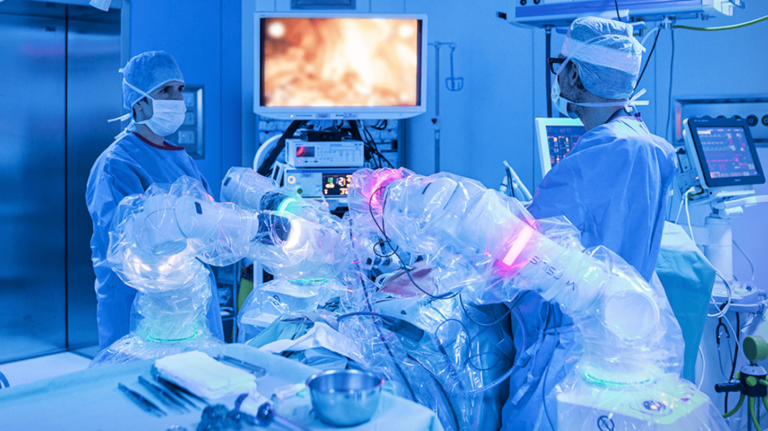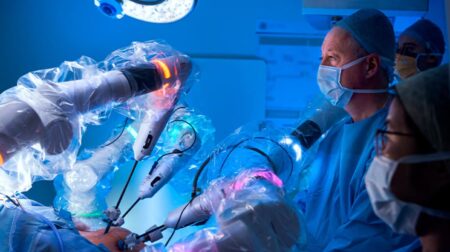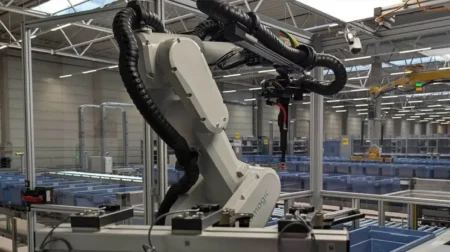The Calderdale and Huddersfield NHS Foundation Trust in West Yorkshire, England, has introduced artificial intelligence (AI) and surgical robots, among other advanced technologies, to improve its cancer treatment services.
The technology is hoped to help the trust reach compliance with three cancer-related benchmarks issued by the UK government, including: a 28-day period between an urgent referral and the patient receiving notification of their cancer diagnosis or normal test results; a 31-day timeframe from the decision to treat a patient to the initiation of the first treatment; and a 62-day interval between an urgent GP referral to the commencement of the initial treatment.
Read more: Helping Hands
Robotics and AI will be used to try and reduce the strain on hospital resources, Sky News reported.
The Versius surgical robot, though initially used for colorectal procedures, has now been expanded to urology procedures. The robot’s improved precision, faster operating times and relief of physical strains for surgeons is hoped to lead to faster recoveries and more efficient use of hospital resources.
Other technology implemented by the trust includes a new diagnostic test called the Cytosponge to speed up the process of detecting esophageal abnormalities in a less invasive manner.
Arin Saha, a consultant general surgeon at the hospital, told Sky News how Cytosponge can speed up diagnostics for people with pre-existing conditions that increase their likelihood to develop cancer. He said: “You normally get the result back from the lab within a week and you’re able to tell a patient as the result comes back to you.”
“So that’s a really good benefit compared to the old way of doing things when you have to wait for the biopsies that can take a couple of weeks to come back.”
AI will likewise be used to analyse chest X-rays, with the algorithm reportedly able to assess scans in approximately seven seconds, meaning patients can receive same-day results and start treatment earlier.
It is hoped this technology will support improved management of radiographers’ workload and improve waiting and recovery times across overall patient care.









